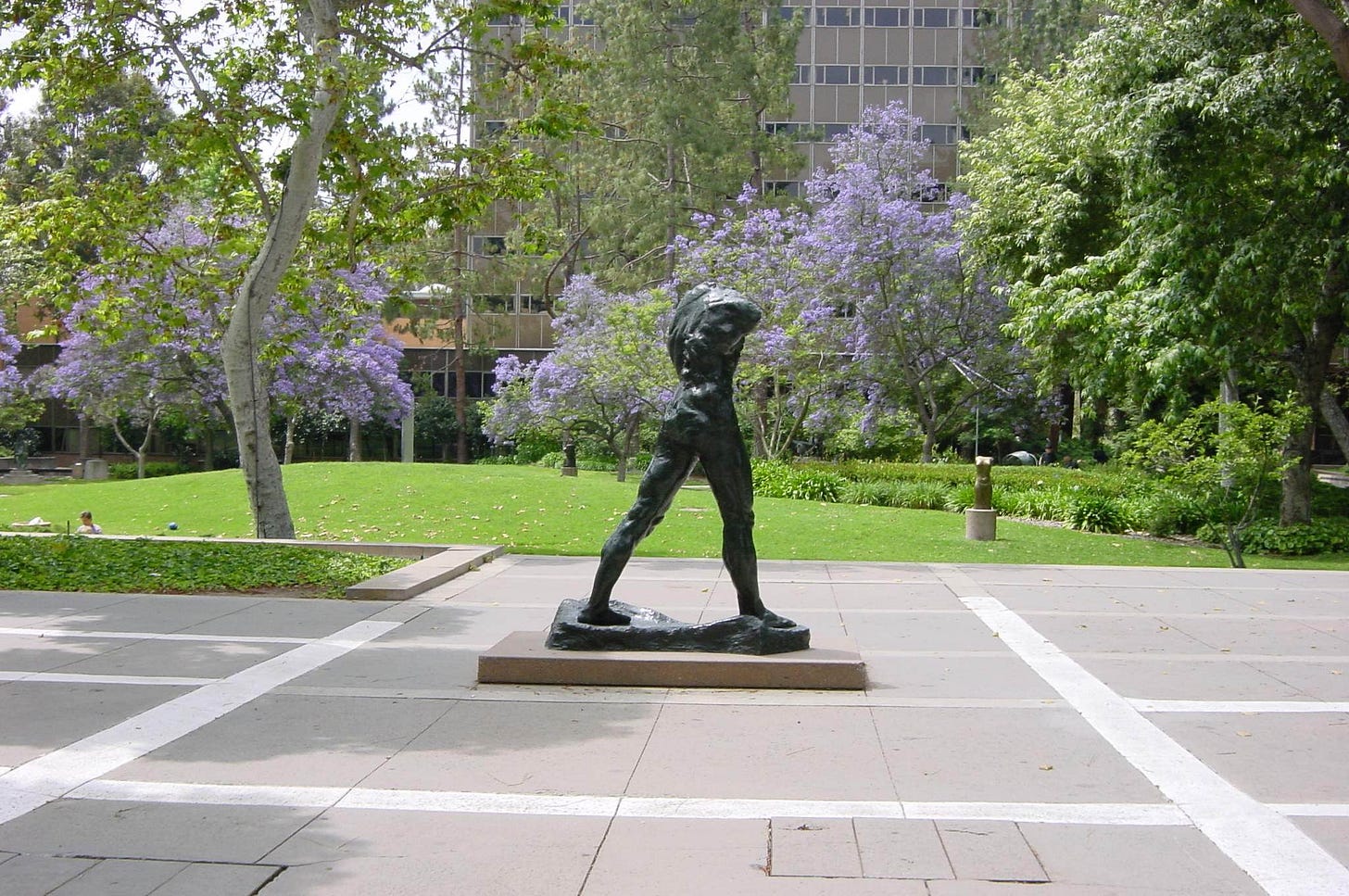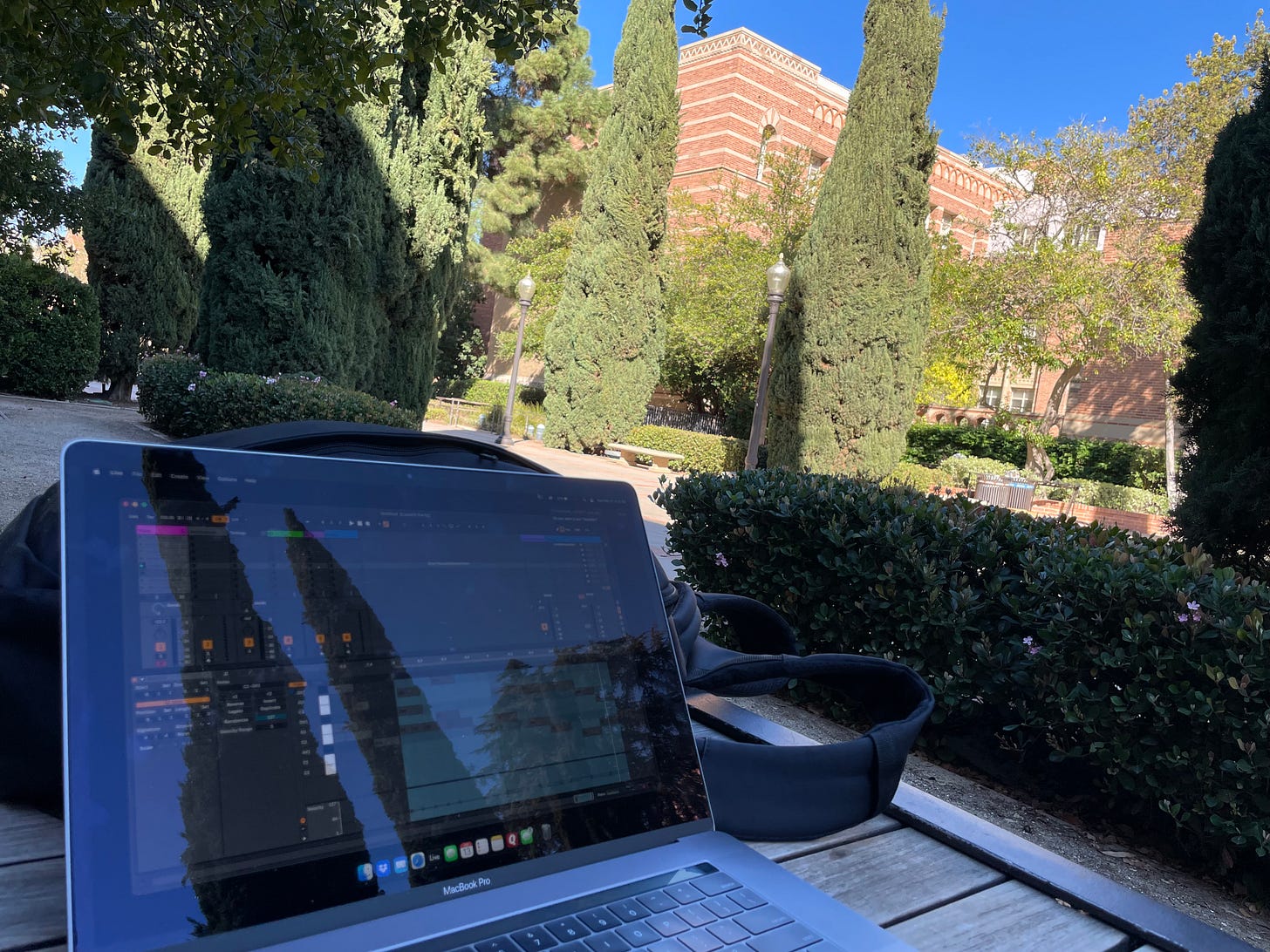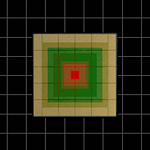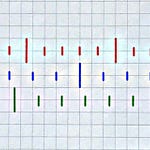Today my goal is to talk about tuning without ever saying “in” tune or “out of” tune. Those words? Those words are judgy. They have come to imply good and bad, right and wrong, professional and amateur. They are a critique, and an emotional block.
Instead, I’m going to talk about “clarity.” There is less clear, and there is more clear. Different levels of clarity are not necessarily a spectrum of correctness. They are just different tools in a toolbox: sometimes you need a razor, sometimes you need a chainsaw. Sometimes you want a sip of cold water, sometimes you want a mouthful of cotton candy.
Here is the passage for today:
There is an extremely subtle adjustment to the tuning of the piano in this track, which you might not notice your first time through. If you didn’t, try listening again and see if anything strikes you. (hint: there is one chord in the middle of each of the four phrases that is held for a moment).
To me, those four chords sound just a bit different than how I’m familiar with a piano ever sounding. I would describe them as exceptionally clear… in this context they give me a feeling of stability. Almost like freezing time for a moment. Here are two of those chords isolated — the first two with my adjusted tuning, and then the same two chords in typical piano tuning:
If you’re not sure you hear it, that’s because it is truly, truly subtle! Particularly on the piano, an instrument without the ability to sustain a note at a constant volume, the effect is mostly in the first split second, and it fades quickly.
But the difference can be made much more obvious when demonstrated on a synthesizer. Here’s a bit from the same passage, using the exact same notes:
First, with that chord as it would typically be tuned:
Compare to a version with that chord given the tuning adjustment:
Can you hear the difference? Even feel it?
The first chord sounds less clear: thick, fuzzy, anxious even.
The second, more clear: stable, it has a sense of being at rest. It’s like water frozen solid, like all the pieces of the puzzle are locked in place. A figure set in stone.
Again, I do not mean to paint either as right or wrong: different musical intentions benefit from different amounts of clarity. But in my own musical world, I’ve been searching for exceptional clarity ever since I was drumming on a practice pad with a friend at age 15, trying to make our open roll sound “clean.” If one of us played a little bit faster or slower, a bit ahead or behind… the result was what we would have called “fuzzy” (and yes, that is a judgement).
But if we could manage to lock in at exactly the same speed, there it was: ✨clarity✨. We could hear it, and we could even feel it.
Without realizing it, we had discovered tuning.
Sidebar: this is the point where I acknowledge that, as you may have noticed, I’m using my own music for demonstration. In fact… this is a track from my latest album, which I’m currently doing my very darn-dest to promote. If sharing my story here leads you to want to hear more, share with a friend, or even purchase an album, I would really really love that. If not, that’s fine too. Either way, I thank you for your indulgence.
In February of 2022, I flew to Los Angeles to attend a close friend’s concert, marking the re-opening of Disney Hall. The previous months had been extremely challenging. Trying to find places outside of my apartment to work on music, I was faced with the stress of newly-crowded indoor spaces and the bitter NYC cold outside. I was not coping well with an intense creative drought, and my struggle with depression was spiraling. In a hopeful leap of faith, Broadway had re-opened, only to be met by a new wave of covid that made returning to my work as a sub in the cramped Broadway pits terrifying. I was frustrated, angry, and most of all — anxious.
That morning I got off the plane, picked up a car and drove to the UCLA campus — one of the most peaceful places I know, where I started my formal music education 25 years ago. It must have been some kind of break in the term, because the campus was completely empty. And yeah, it was like, 68 degrees. The smell of the eucalyptus trees. The light gently filtering through the leaves in the slightest breeze. It was like time had stopped. I was alone.
Anxiety takes a tremendous toll on the body. Depending on the flavor, it can be like a marathon or a sprint — but to maintain either state requires so much energy that when it is over, the crash can take you way, way down — almost to paralysis. I’ve noticed this again and again; stress, anxiety, panic — they can’t be sustained forever, and they are inevitably followed by depression. And that day as I looked around, it was like my physical surroundings had manifested that emotional state. The stillness and isolation, in comparison to where I had just arrived from, was painful, lonely — and beautiful.
Wandering campus, I stopped in various places to open the laptop and try starting something simple — to “go slow and work with limitations.” I was relieved to find that the moment was translating and I soon got lost in some simple harmony and a conversational melody. I spent the majority of that day in the sculpture garden that lies halfway between the music building and the law school, where I used to sit 25 years ago.
I think I saw more sculptures than living people that day. Here’s the thing… both the human and abstract forms radiated a sense of permanence that resonated. I stared. Here they were, exactly the same as they had been when I sat here 25 years ago. It was like crawling into a photograph of some earlier version of myself.
Picking the piece up later to finish it, I realized that it expressed a lot of what I was feeling that day, and yet I still hadn’t found a musical translation of that sense of stasis, of permanence. I knew that “just intonation” in general could have that effect of stasis, and I experimented with applying different tunings to the whole piece, but it wasn’t until I had the idea to retune only certain chords, specifically only the major triads, that I happened upon the effect of actually stopping time — like wandering through a garden of moments set in stone.
And here you have Sculpture Garden. This track concludes side A of the album, and if the music up to that point could be seen as a relentless and disorienting build up of stress and anxiety, Sculpture Garden is the stillness after the inevitable crash.
I’ve purposefully avoided naming specific concepts from music theory so far in this post. Here’s a quick summary for those who might want to match them up with the terminology:
The major chords I’ve demonstrated from this piece that have a quality of clarity and stability are what’s called justly tuned. All this means is that the relationship between the frequencies of the notes are rational — they consist of whole number ratios. In this case, the ratios are 4/5/6. Relationships of 2/1, 15/16, or perhaps 531441/524288 (very important to Pythagorus) could all be called justly tuned.
Generally speaking, the lower the numbers of the ratio, the more clarity the ear experiences in the chord or interval. 2/1 is an octave, and is so clear that it can be hard to distinguish between the two notes when played together. We even give them both the same note name, like “C#”.
Conversely, our standardized western tuning system is known as 12-tone equal temperament (12tet). This is how a modern piano would be tuned, and the name refers to the fact that you have the octave divided into 12 equal steps. That sounds mathematically simple, but those relationships are relatively complex and mathematically irrational. Think: a decimal with infinite non-repeating digits.
12tet has been theorized various times over human history, but was first fully calculated by a Chinese mathematician in 1584 and then developed extensively in the west over the past couple hundred years. At its core, I see 12tet as an approximation of one particular justly tuned scale for practical purposes, as it allows music to modulate through all 12 keys using only 12 notes (and western composers just LOVE to modulate).
Sculpture Garden uses piano tuned in standard 12tet, and is in a minor key. But whenever there is a major triad, I’ve adjusted its tuning to be just: for example in a C-E-G triad, it would involve bending the E slightly lower, and the G almost imperceptibly higher.
It’s subtle, but lock those ratios in and the world comes into focus — and freezes.
The Video:
Paralyzed, I observe the world as if through the eyes of a ghost. Stretches of time overlap, moments loop in slower motion with each repetition, and single frames freeze and solidify into permanence — as if carved in stone.
Music and video by Chris P. Thompson
with additional footage shot by Jared Soldiviero
Further Reading:
Maximum Clarity is a collection of writings on music by one of my personal heroes — composer and theorist Ben Johnston. Ben’s music is an encyclopedia of creative uses of just intonation and microtonality and his (often overlooked) writings on music theory and culture are fascinating and ground-breaking. He even worked and recorded with Harry Partch as a youngster. I expect to be referencing his work frequently in this publication.
🔊 Subscribe for free:















Share this post